
SelfRepair
PROJECT OVERVIEW
How to reduce the cost of repairing your car? Use SelfRepair!
CHALLENGE:
SKILLS:
TOOLS:
TIMELINE:
TEAM MEMBER:
Complete the hardware prototype.
User research, Interviewing, MVP, Wireframing, UI design, Prototyping, Video editing, 3D Modeling, Storytelling
Figma, Adobe Photoshop, Adobe Premiere Pro, Adobe Illustrator, Arduino
4 Weeks, May 2022 to June 2023
Qi Luo
Feather
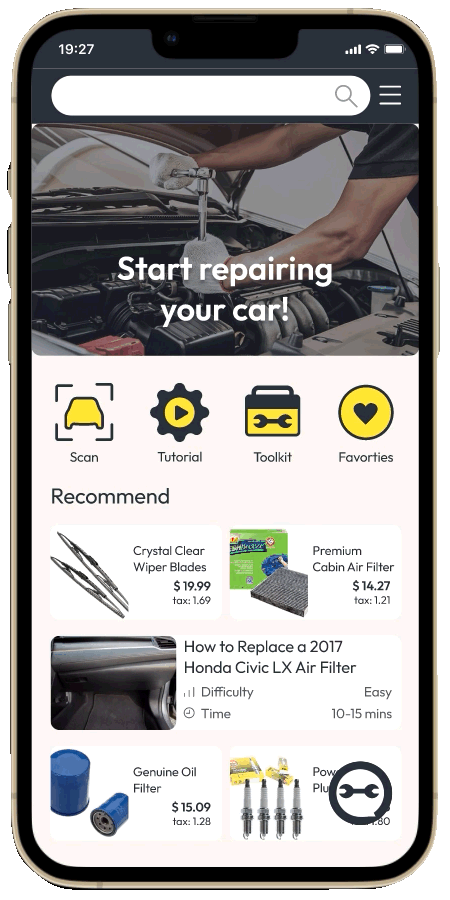
Story
Use the category search to find what you are looking for
Find Your Car
ind the exact make, year, and model of your car by taking a photo of the vehicle
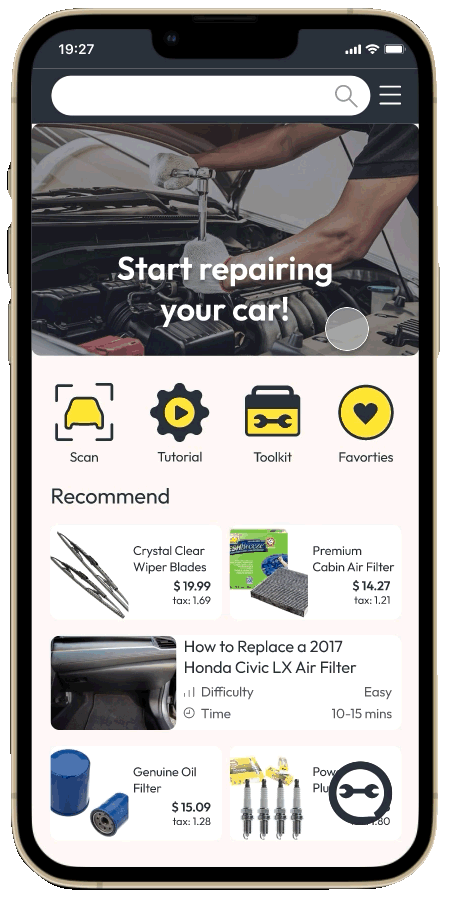
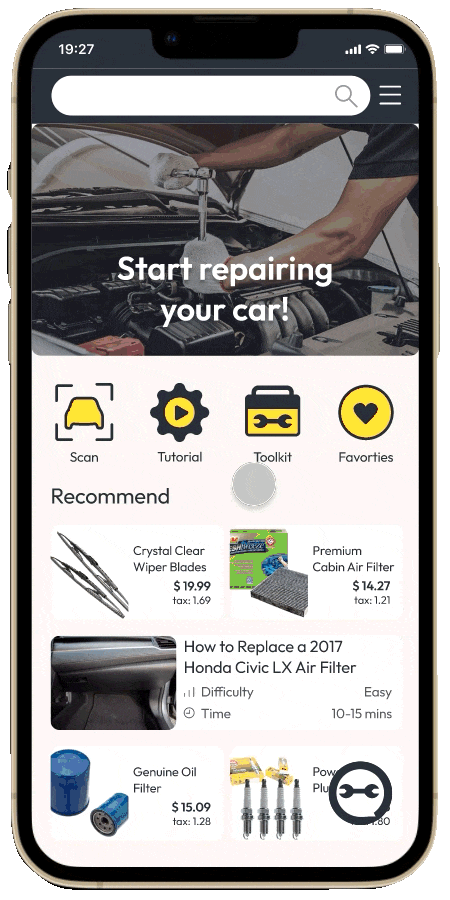
Tutorial
Pinpoint exactly the tutorials you need and complete your needs with step-by-step instructions
Toolkit
Quickly purchase the tools and accessories you need to accomplish your repair goals
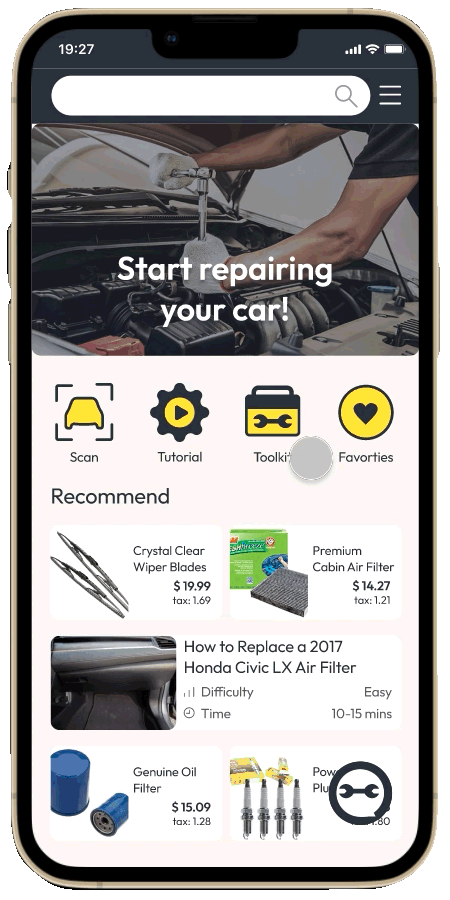
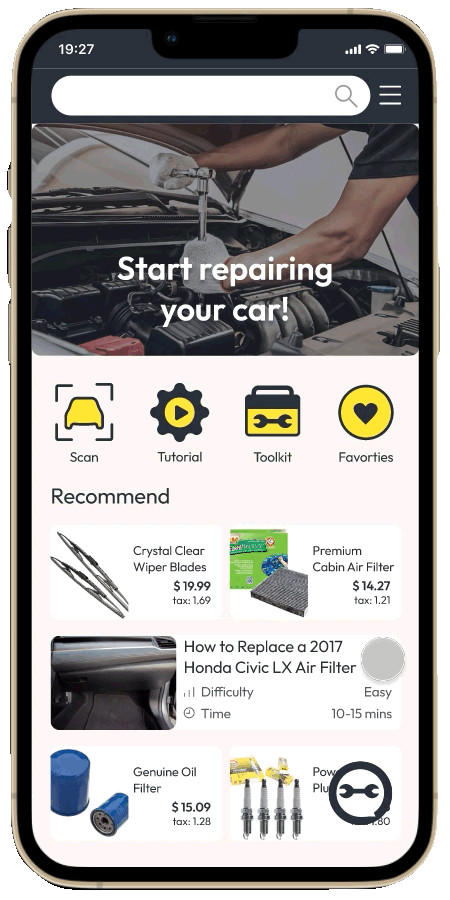
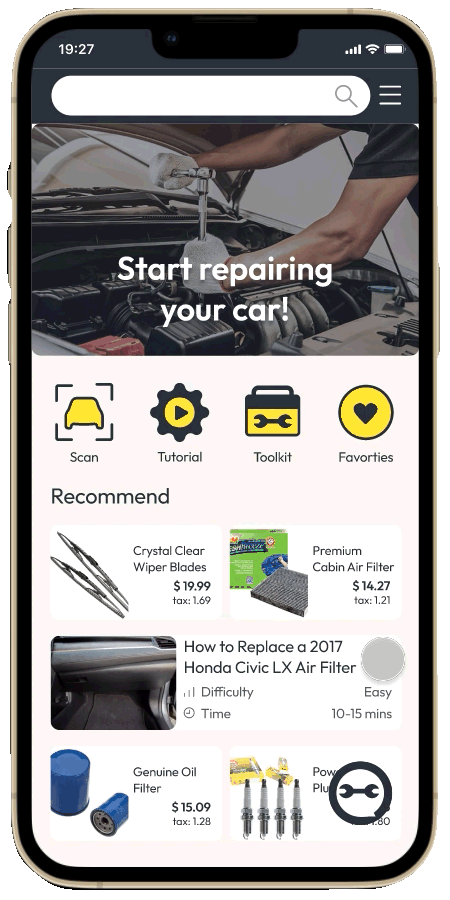
Favorite
Like and sort your favorite tutorials for a quick search next time
Customer Service
Consistent, accurate customer service responses to guide you to everything you need
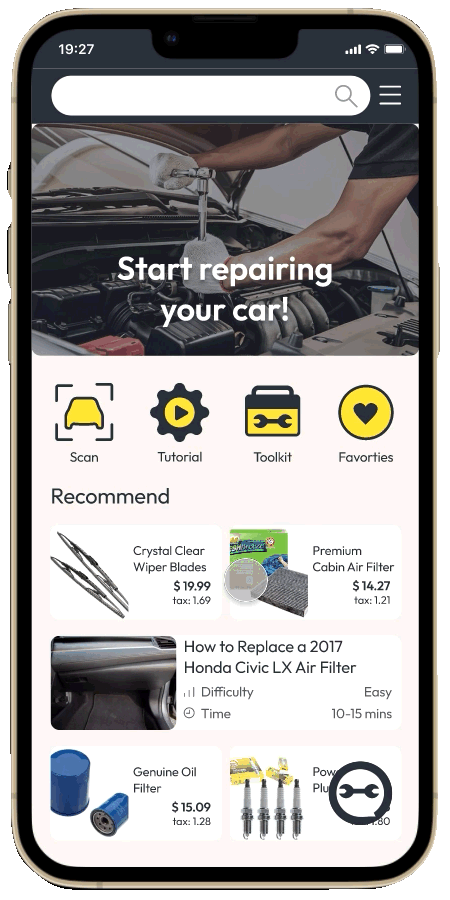
Research
Most of you have encountered similar problems to me in one way or another. Faced with the high cost of labor, it becomes a more cost-effective option to perform simple maintenance on your car. However, the search for tutorials and auto parts is still confusing.
Story

This is my experience of making an offline purchase and replacing the wipers myself. During this process, I learned a few things even further. For example, the confusion I felt in the face of the wide range of wipers in the supermarket, or the lack of instructions on how to remove the wipers in the manual, etc.
Survey
Most people choose to do self-repairs

Confused in finding tutorials and auto parts

Interview
During the interviews, it was evident that
1. The most important thing is the quality of its products. Quality is the main concern and price is the second consideration.
2. Look at the evaluation of auto parts online, and then also ask the relevant professionals.
3. I will buy the corresponding parts from the Internet and try to replace the simple parts by myself.
Persona

After conducting interviews, I created an archetypal persona for the target audience, Anna, a furniture designer who is young, creative and driven. She is keen to try to do some efforts on her own, so she prefers to try it on her own first rather than repairing the store.
SWOT Analysis

For the repair business, my target audience can get help from Website/APP, Youtuber, DIY Car Repair Service, Car Manual, Automotive Technology Class, and Traditional Car Repair, some are more instructional and some are more service oriented. Some are more instructional and some are more service oriented. So, I used a SWOT approach to think about the strengths and weaknesses of me and similar manufacturers.
Skateholder Map

I first used the skateholder map to think about who are the people in the system and what kind of relationships they correspond to. In this chain, there are five main categories: Customers, Suppliers, Competitors, Content providers and Advertising Sources, and some other related people.
Journey Map

When Anna wants to try to replace the wipers on her car herself, she hopes to find cost-effective and practical items, preferably with detailed installation videos This is the process she usually goes through.
Ideation
Design Process
To solve this problem, I came up with an application that allows quick access to clear tutorials. At the same time, it is also possible to quickly purchase the needed parts, opting for a one-stop solution for light users who want to be able to solve the problem of replacing parts themselves, without much knowledge or experience.
Moodboard

For the color of the application, I chose to start with a technological touch, showing the concept of sharing wisdom and saving wealth.
User Flow

The result is this flowchart of the choices and processes a user faces when trying to find the right tutorial through my application.
Service Blueprint

In order to think about the structure of the application, I chose to use a service blueprint to measure the nodes that are connected and the pages that need to be prepared. The multiple levels of fit and alignment that need to be involved and ensure silky smooth accuracy
Low-fidelity UI (sketched)

Thinking about SelfRepair’s UI design from Low-fidelity, I prefer a page where you can clearly and quickly find the tutorials you need, which is the key feature of SelfRepair. While it is possible to purchase accessories on SelfRepair, it is more important to find tutorials.
Wireframe










Based on this idea, I further streamlined the unnecessary functions in the Wireframe section and enhanced the presentation of the key functions to ensure smooth use and easy understanding.
Prototype
Reflection
This project was derived from a minor inconvenience in my life. Car repair is a complex process, but that doesn't mean that every part of it is difficult to accomplish. Many parts are actually quite simple to replace, and buying your own parts and replacing them is a much more affordable option. But due to the diversity of car models, I couldn't find the right tutorials and parts fast enough. Nor could I repeatedly buy different parts on a trial-and-error basis. In this case, I believe that software that can recommend good tutorials and parts is needed. That's why I chose to design such a project in the first place. I wanted to make my life easier by aggregating and searching for information more efficiently.